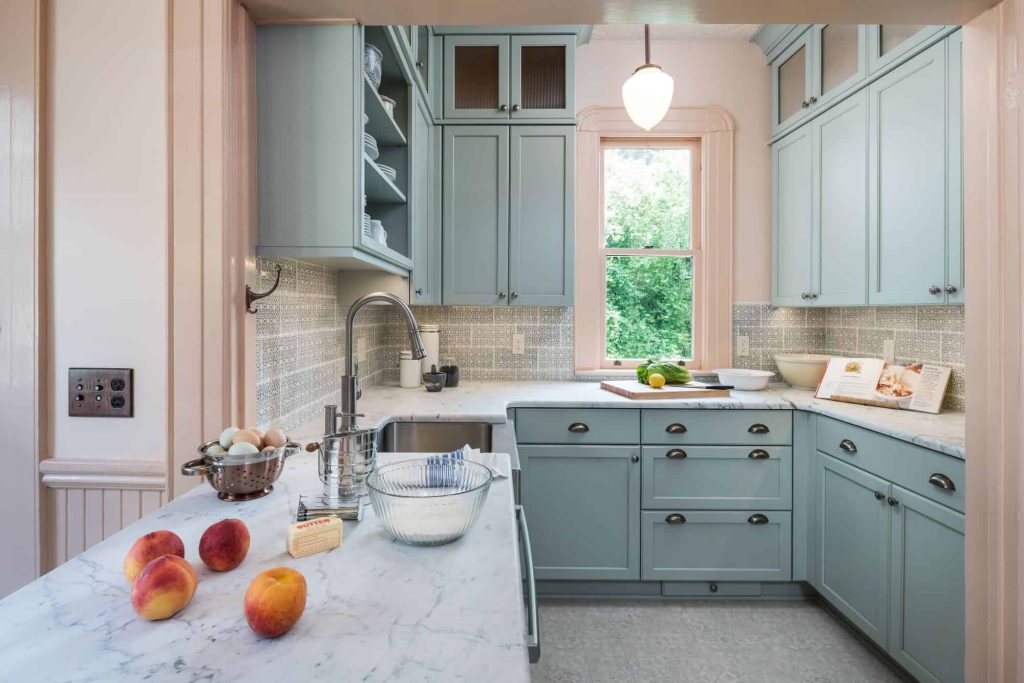Lighting is one of the most important aspects of any room in your home, but it is especially crucial in the kitchen. The right lighting can make a huge difference in how a space looks and feels, as well as in how functional and practical it is to work in. When it comes to choosing the right lighting for your kitchen, there are several factors to consider to ensure that you get the best results possible. In this article, we will discuss how to choose the right lighting for your kitchen, including the different types of lighting available, how to plan your kitchen lighting design, and tips for installing and maintaining your kitchen lighting.
Types of Kitchen Lighting
When it comes to lighting your kitchen, there are three main types of lighting to consider: ambient lighting, task lighting, and accent lighting.
– Ambient lighting: This is the general lighting that provides overall illumination for the room. It should be bright enough to light up the entire space, but not too harsh or glaring. Ambient lighting can come from ceiling lights, recessed lighting, or pendant lights.
– Task lighting: Task lighting is focused, directional lighting that is used to illuminate specific work areas, such as countertops, stovetops, and sinks. This type of lighting should be bright and shadow-free to make tasks like cooking and food preparation easier and more efficient. Task lighting can be provided by under-cabinet lights, track lighting, or recessed lighting.
– Accent lighting: Accent lighting is used to highlight specific features or elements in your kitchen, such as artwork, architectural details, or decorative items. It adds depth and warmth to the room and can create a more inviting and cozy atmosphere. Accent lighting can come from wall sconces, strip lights, or spotlights.
Planning Your Kitchen Lighting Design
When planning your kitchen lighting design, it’s important to consider the layout and size of your kitchen, as well as your personal preferences and lifestyle. Here are some tips to help you create the perfect lighting plan for your kitchen:
– Start by assessing the natural light in your kitchen. Take note of where the windows are located and how much sunlight they let in throughout the day. This will help you determine where additional lighting may be needed.
– Consider the different tasks that you perform in your kitchen, such as cooking, cleaning, and dining, and where you need the most light for each activity. Make sure to place task lighting in these areas to ensure that you have adequate illumination.
– Think about the style and theme of your kitchen and choose lighting fixtures that complement and enhance the overall aesthetic. Whether you prefer modern, traditional, or eclectic design, there are plenty of lighting options available to suit your taste.
– Don’t forget about energy efficiency. LED lights are a popular choice for kitchen lighting because they are long-lasting, energy-efficient, and produce less heat than traditional incandescent bulbs. Consider replacing your old light fixtures with LED lights to save money on your energy bills.
Installing and Maintaining Your Kitchen Lighting
Once you have chosen the right lighting for your kitchen, it’s time to install and maintain it properly. Here are some tips to help you with this process:
– Hire a professional electrician to install your new lighting fixtures. This will ensure that they are installed correctly and safely and that they will work properly for years to come.
– Consider adding dimmer switches to your kitchen lighting. Dimmers allow you to adjust the brightness of your lights to create different moods and ambiances in your kitchen. They are also great for saving energy and extending the life of your bulbs.
– Clean your lighting fixtures regularly to keep them looking their best and functioning properly. Dust and dirt can accumulate on light fixtures over time, so be sure to wipe them down with a soft cloth or a mild cleaning solution to keep them clean and bright.
– Replace old or broken light bulbs as soon as possible. Burnt-out bulbs can make your kitchen look dim and dreary, so be sure to check your bulbs regularly and replace them when necessary.
In conclusion, choosing the right lighting for your kitchen is essential for creating a functional, inviting, and stylish space. By considering the different types of lighting available, planning your lighting design carefully, and installing and maintaining your lighting properly, you can create the perfect lighting scheme for your kitchen that enhances its beauty and practicality. So, take the time to explore your options, make a plan, and invest in quality lighting fixtures that will make your kitchen shine.

